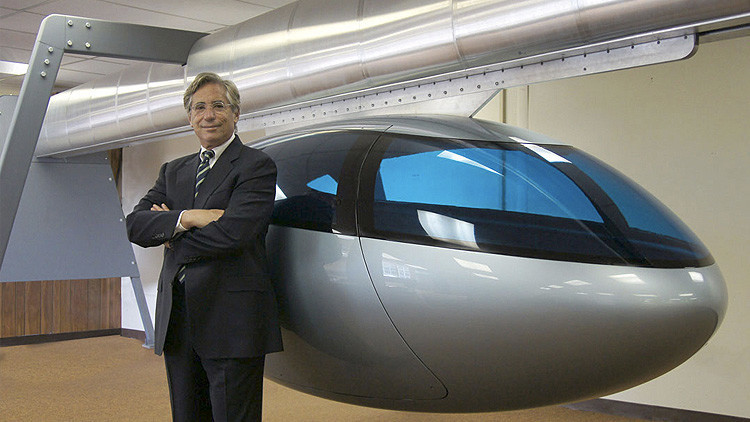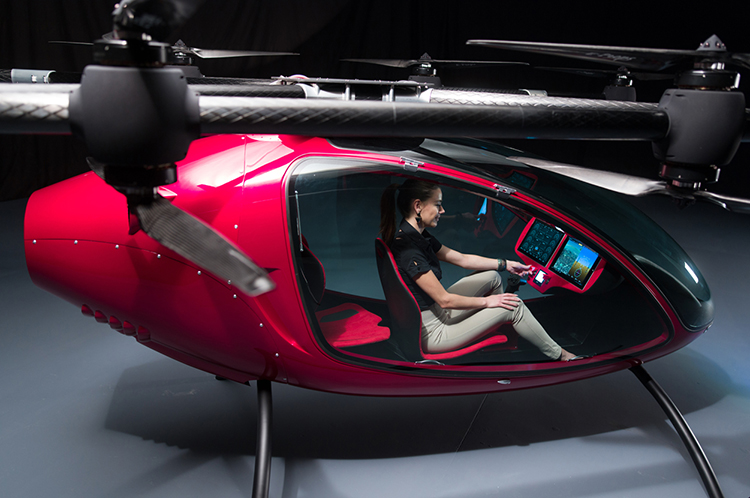We have seen dramatic technological advancements in recent years. Companies are in a race on who can come up with the most innovative solutions to common problems.
The automotive industry is at the forefront of these developments.
Transportation continues to face challenges like traffic and accidents. As the world is becoming more fast-paced, there is also pressure to make travelling more efficient. Businesses are also looking at transporting goods faster to speed up economic gains.
As a result, we see exciting breakthroughs in the transport industry. Forward-thinking innovators spend millions investing in never-before-seen vehicles. These are positive developments because the goal is not just to sell and make money. They also want to make things convenient for everyone.
Here are the top 4 futuristic vehicles that are on the horizon:

1. SkyTran
SkyTran aims to revolutionize daily commute by using magnetic levitation (maglev) and propulsion technology. This autonomous monorail system uses pods that travel 20 feet above roads with a speed of 100 to 155 mph. This seamless point-to-point transportation system cuts a two-hour commute into 10 minutes.
This smart technology figures out on its own what the demand for its capsules is. It then deploys enough pods in an area where the service is much needed.
Using this system is easy. A user needs to log in to the SkyTran app, enter a destination, and go to the nearest station. The assigned capsule will then bring him/her to the station nearest to where s/he wants to go.
Maglev technology also ensures a hassle-free commute that is fast and smooth. Its system eliminates the stopping, waiting, and transferring of stations and vehicles. It is the ideal mode of transport for busy individuals.
Dubbed as the public transport of the future, SkyTran aims to put in place its systems in major cities in the world. They designed their rails, passenger vehicles, and stations to be small. They can fit inside airports, major business centres, and buildings.
2. Hyperloop
Hyperloop is a version of a vacuum train borne out of the mind of technology innovator Elon Musk. The design uses pods that travel through low-pressure tunnels that offer little air resistance.
Some describe this mode of transport as something straight out of science fiction movies. But this is looking more real by the day. The current pace of technological and scientific advancements makes things possible.
Hyperloop can go as fast as 1,000 km/h while transporting people and cargo. This cuts time dramatically. When implemented, intercity travel and transfer of goods will be more time- and cost-efficient.
A traveller no longer needs to worry about the usual concerns when travelling. This system is in a controlled environment and is autonomous.
Hyperloop is also cutting edge in terms of sustainability. People behind this mode of transportation promise a low impact on the environment.
Another key promise of its developers is on cost for the everyday consumer. Using advanced technology, Hyperloop will make use of high quality but low-cost materials. This will ensure that the prices will be accessible.

3. Passenger Drones
Drone technology is a popular innovation. Photographers use them to take magnificent aerial shots. The military carries out its missions using unmanned combat aerial vehicles. They use these for surveillance and drone strikes. Some organizations use them to assist in disaster relief.
The next step for drone innovators is transportation.
An electric autonomous aerial vehicle is now able to carry one passenger. It can also travel from one city to the next, making transportation a breeze.
It registers speeds of up to 100 miles per hour. A drone can carry one person and his/her luggage of up to 220 pounds.
The use of more updated technology makes the drones autonomous, smart, and responsive. While flying, it can avoid obstacles, resolve internal issues, and make emergency landings.
Like other futuristic modes of transportation, one can book the service via an app.
4. Self-Driving Cars
Driverless cars are among the most hyped technology experiments in the modern era. At first glance, this is the next stage for car manufacturers. Artificial intelligence and machine learning make it possible for cars to drive themselves. There will no longer be a need for humans.
Such technology will be helpful for persons with disabilities and the elderly. They can be more mobile because of this development. It will also help improve the safety of travel for people who are ill or drunk. Driverless cars will make it possible and safe to read or sleep while in transit alone in a car.
The idea behind a self-driving car is simple. Car manufacturers will equip cars with smart cameras. This will make them aware of their surroundings. If it is about to hit something, the car will react. The vehicle will also be equipped with artificial intelligence. The program will teach them to know and understand the rules of the road.
Driverless cars specifically use light detection and ranging technology (lidar). Lidar is used to estimate the distances of objects. They rely on sensors, powerful processors, and algorithms to work. These vehicles can also see the position of other vehicles, traffic lights, road signs, and pedestrians.
This technology has encountered major problems in recent years. Researchers found out that it is not that easy to teach actual road driving to artificial intelligence. To be effective, engineers need to show footage of billions of hours of real driving to machines. If data is not enough, the program cannot learn enough information. It will not know how to react to different issues on the road.
